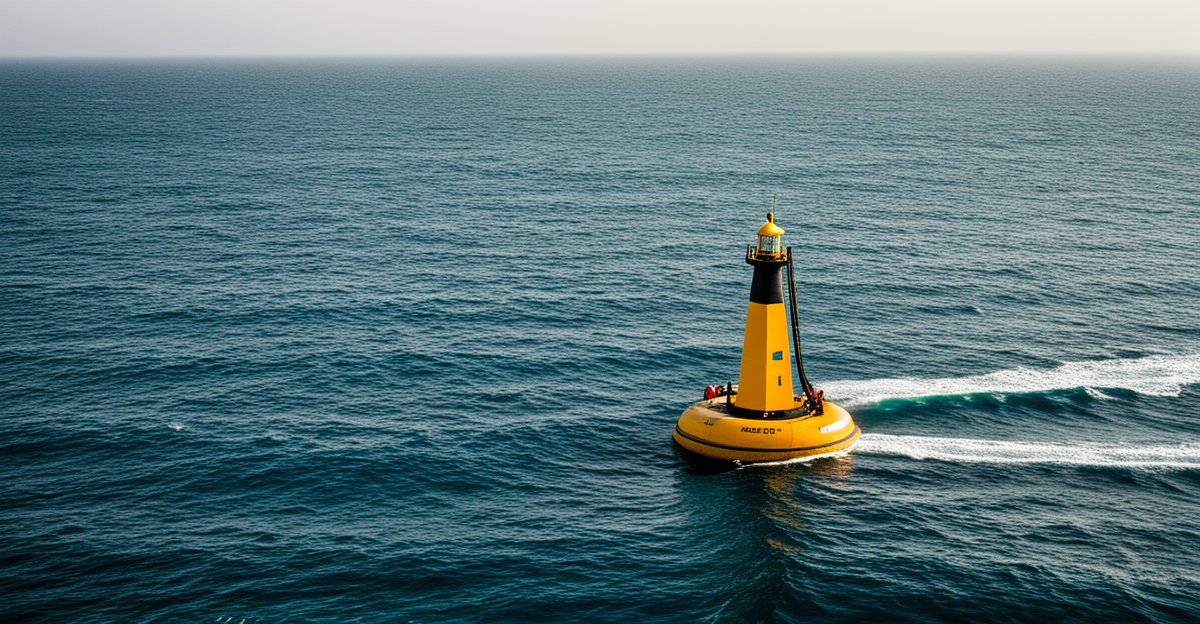Marking buoys play an essential role in safeguarding maritime navigation in Saudi Arabia, enhancing safety standards across its busy waterways. Recent installations, like the twelve signaling buoys at the Jeddah refinery, exemplify the vital partnership between Resinex and Saudi Aramco. This article explores the types of marking buoys, their specifications, and the regulations governing their use, providing insights into the significant impact they have on local maritime operations.
Overview of Marking Buoys in Saudi Arabia
Marking buoys serve a critical role in maritime navigation. They delineate safe pathways for vessels, indicate prohibited zones, and safeguard sensitive marine ecosystems. The installation of marking buoys in Saudi Arabia is an intricate process influenced by regulatory standards to ensure both maritime safety and environmental protection. These buoys, available in various designs such as PEM 25, 21, and 18, are structured with durable materials compliant with international standards, ensuring longevity and minimal maintenance.
Topic to read : Ultimate guide to vat filing for small business owners in the uk: tips and strategies for entrepreneurs
The regulatory framework governing this installation prioritizes adherence to IALA recommendations and ISO standards, emphasizing precision in design and deployment. The markers are equipped with light signals and diverse color codes orange, white, or yellow facilitating safe navigation even in low-light conditions. Such measures are pivotal to protecting high-traffic areas and vulnerable zones of marine life.
The implementation of these buoys not only enhances navigational safety but also preserves critical ecological habitats. With organizations like Mobilis leading the efforts, the buoy system in Saudi Arabian waters reflects a sophisticated blend of engineering expertise and environmental stewardship.
Have you seen this : Transforming workplace safety with cutting-edge technology
Types of Marking Buoys in Saudi Waters
Different types of marking buoys available in Saudi Arabia
Saudi Arabia employs a range of marking buoys crucial for maritime safety. These buoys vary in design and functionality to meet different navigational needs. Common types include stationary and floating marking buoys. Stationary buoys are anchored to remain fixed in their location, while floating buoys are designed to move with the tide, ensuring flexible positioning. For instance, in Saudi waters, the PEM 25, PEM 21, and PEM 18 buoys differ in diameter and focal plane height, offering robust options for various marine conditions.
Features affecting buoy visibility and buoyancy
Buoyancy and visibility are critical features for marking buoys, directly impacting their effectiveness in maritime navigation. These buoys often feature vibrant colors such as orange, white, and yellow to enhance visibility in low-light settings. Equipped with light signals, they ensure clear demarcation of safe and restricted zones. The design employs durable materials, offering both buoyancy and resilience against harsh marine environments.
Color coding systems and their significance in navigation
Color coding is a pivotal aspect of the buoy system. Different buoy color coding systems help in identifying specific functions and delineating maritime areas. For example, orange buoys might indicate fishing zones, while yellow ones are often used to denote exclusion zones. This systematic approach ensures mariners can navigate safely, maintaining compliance with local and international regulatory standards for marking buoys.
Maintenance and Installation of Marking Buoys
Steps Involved in the Installation of Marking Buoys
The installation of marking buoys in Saudi Arabia requires meticulous planning and execution. Initially, location assessment is crucial, involving ecological surveys to determine the precise placement and ensure minimal environmental impact. The best practices for marking buoy deployment focus on ensuring the buoys’ placement adheres to regulatory standards and enhances maritime safety.
During installation, a variety of materials, prioritizing durability and visibility, are employed. Types of marking buoys commonly used in Saudi waters include floating and stationary options, selected based on specific maritime conditions and requirements.
Maintenance Protocols for Ensuring Buoy Functionality
Regular and systematic maintenance of marking buoys in coastal areas is vital for reliability. This involves routine inspections to identify wear or damage, especially after harsh weather events. Techniques such as GPS tracking are utilized to monitor the position and functionality of the buoys. Training is provided to maintenance personnel, ensuring they are equipped to handle buoy technologies and adhere to international standards.
Collaboration with Local Authorities and Communities
Effective management of marking buoys in Saudi Arabian waters necessitates collaboration with local authorities. Planning buoy placement strategies involves consulting with the community, including local fishermen. Such partnerships help address any ecological concerns while promoting compliance with established regulations.











